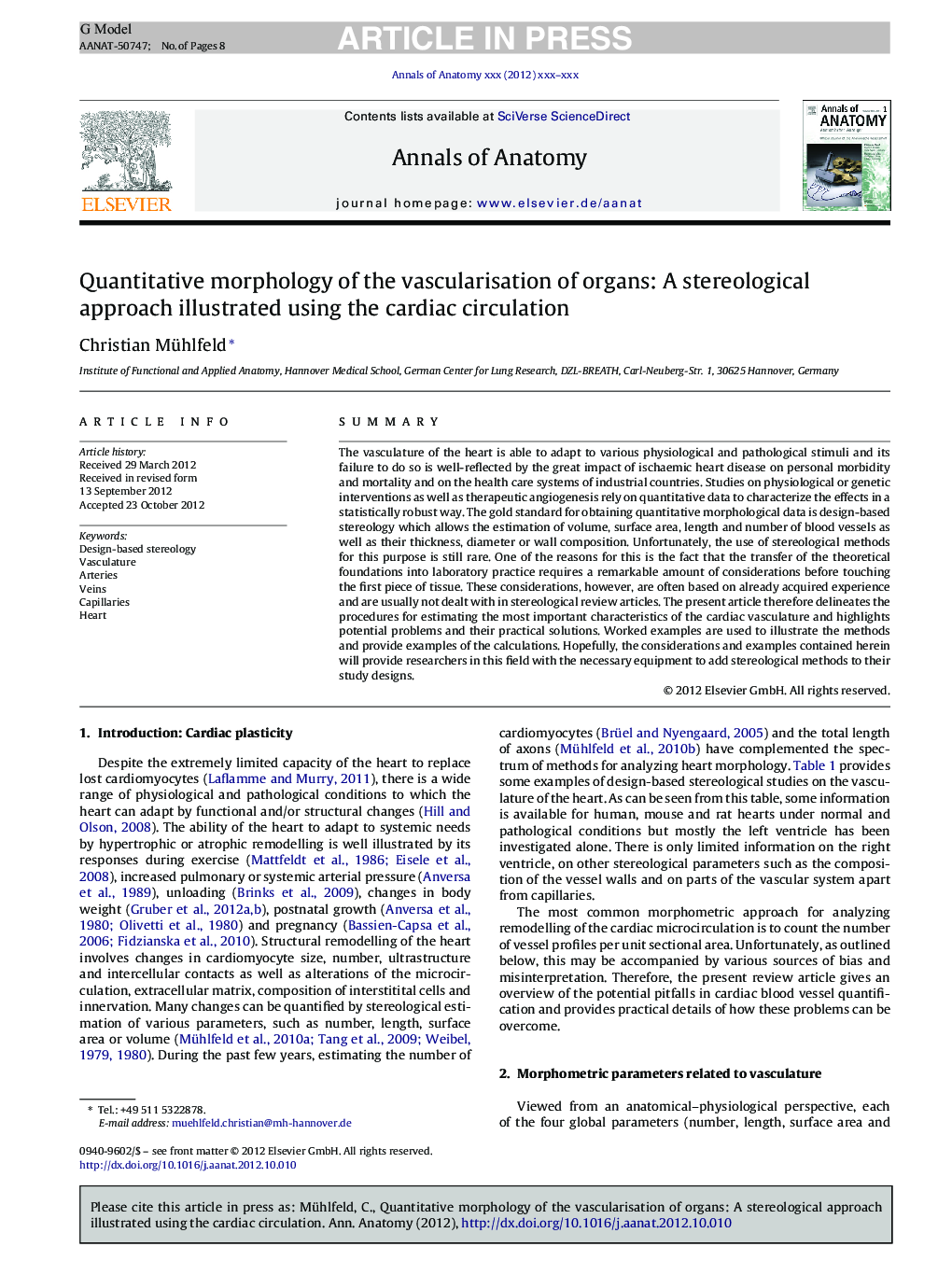| Article ID | Journal | Published Year | Pages | File Type |
|---|---|---|---|---|
| 8461231 | Annals of Anatomy - Anatomischer Anzeiger | 2014 | 8 Pages |
Abstract
The vasculature of the heart is able to adapt to various physiological and pathological stimuli and its failure to do so is well-reflected by the great impact of ischaemic heart disease on personal morbidity and mortality and on the health care systems of industrial countries. Studies on physiological or genetic interventions as well as therapeutic angiogenesis rely on quantitative data to characterize the effects in a statistically robust way. The gold standard for obtaining quantitative morphological data is design-based stereology which allows the estimation of volume, surface area, length and number of blood vessels as well as their thickness, diameter or wall composition. Unfortunately, the use of stereological methods for this purpose is still rare. One of the reasons for this is the fact that the transfer of the theoretical foundations into laboratory practice requires a remarkable amount of considerations before touching the first piece of tissue. These considerations, however, are often based on already acquired experience and are usually not dealt with in stereological review articles. The present article therefore delineates the procedures for estimating the most important characteristics of the cardiac vasculature and highlights potential problems and their practical solutions. Worked examples are used to illustrate the methods and provide examples of the calculations. Hopefully, the considerations and examples contained herein will provide researchers in this field with the necessary equipment to add stereological methods to their study designs.
Related Topics
Life Sciences
Biochemistry, Genetics and Molecular Biology
Cell Biology
Authors
Christian Mühlfeld,
